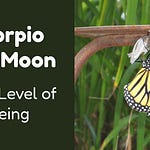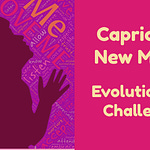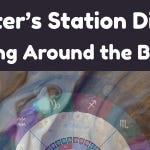This is an audio article / podcast on the Mars-Uranus conjunction that is happening on July 15, 2024. Below is the text.
The video walkthrough that I mention in the podcast will be sent out on the 15th for all subscribers. It is an exciting chart occurring at an exciting time in our human journey and I cover some additional themes that are present in the chart than what I cover in this post. So, for those who want a more expanded look at the energies, it will be worth watching that video. I have included a video clip after the article of one of the themes I cover.
Edit: I wrote this article primarily from what I remembered from watching the film when it first came out in 2004. I rented it from Amazon to nail down the quote I use in the article and then re-watched it in its entirety after posting this article. It turns out I got a couple of details wrong but the general theme that I presented is true to how I took in the various themes in the film.
Regarding what I said about the massacre at Wounded Knee, that was from my memory of a book, Bury My Heart at Wounded Knee, written by Dee Brown, about the devastating effects of the expansion of the United States into the Western part of the continent. The details I shared about the Wounded Knee massacre are a little off. I did not remember the US Army going in to disarm the tribe, as it is told in the movie. Also, while the general idea of a horrific slaughter of a tribe due to a misunderstanding is correct, it does not convey the larger context of intent by the American government.
Worth and Will
There’s a scene in the movie, Hidalgo,1 that, for me, sums up the energy of the Mars-Uranus conjunction. In fact, the whole movie, with its themes of will, worth, and intrigue born out of social hierarchies based on bloodline and religion, reminds me of it. The conjunction between Mars and Uranus happens about every two years. This time around, it will happen on July 15th, 2024. So, starting on that date, we’ll enter into a new two-year Mars-Uranus cycle.
Hidalgo, the title of the film, is the name of a horse, the horse being a Mustang of the Wild West. According to Merriam-Webster, hidalgo is a spanish word that means “a member of the lower nobility of Spain”. The symbolism of social hierarchy and rank is a theme that permeates this film, and one that permeates our society, too, conditioning our sense of identity, place, and worth.
The symbolism of the Mustang, a perfect metaphor for the movie as we’ll see, might also be the perfect archetype for the energies embodied in the chart of the Mars-Uranus conjunction. Mustangs, according to Oklahoma State University, are feral horses, [some of whom2] roam free in herds in the Western United states.3 Originally brought over by Spanish conquistadors, they mixed and were mixed with other breeds over the years, so are a mixed breed, not thoroughbreds.4 Feral, it should be noted, is a word applied to once tamed animals that have become wild. Wild refers to animals that were never tamed.5
Although I titled this article, Worth and Will, freedom is the grander theme, freedom being the state that arises naturally from our sense of worth and worth being that which births our exercise of free will. So, without worth and will, we can’t get to freedom.
Hidalgo is set sometime during the long and painful and, frankly, horrific period of the genocidal conquest of America by our early American ancestors. The central character, the hero, well-played by Viggo Mortenson [correction: Mortensen], is Frank Hopkins. Hopkins was a real-life person and the movie is said to be based on a true story, but it seems that the details of Hopkins’ life portrayed in the movie do not line up with historical fact.6 If you can let go of the historical inaccuracies and take the movie on its own merits as the story of one person’s search for identity, self-acceptance, and peace, then the movie holds up reasonably well.
Based on the movie, Hopkins’ mother was Native American and his father was a white soldier. Hopkins himself was a long-distance horse racer past his prime but who was reputed to have won, together with Hidalgo, every race he had entered when younger. Living in the white world and working as a scout and translator, he witnessed the wounded-knee massacre, an experience that haunted him. Next up in the movie, we find him washed up and drunken, working for Buffalo Bill’s Wild West show, living out a version of himself completely devoid of worth.
After Hopkins crashes into the crowds in a drunken blunder during one of his performances while riding Hidalgo, a representative for a Saudi Sheik, offended by the claim that they made in the Buffalo Bill show that Hopkins is the greatest long distance horse racer ever, challenges Hopkins to race in a legendary long distance horse race through the Arabian desert. Hopkins doesn’t want to do it and walks out.
After he walks out, he runs into another member of the Buffalo Bill Cast, Chief Eagle Horn. Chief Eagle Horn encourages Hopkins to enter the race, citing the dead-endness of their situation, but Hopkins still doesn’t want to do it, saying that Hidalgo is past his prime. Chief Eagle Horn, wise to the core, and who calls Hopkins Far Rider, says, I call you Far Rider not because of your gift for long distance racing, but because you have traveled so far from your own spirit. After that conversation, Hopkins decides to enter the race.
From the time Hopkins and Hidalgo land in Saudi Arabia, Hidalgo’s worth is called into question. A mixed breed Mustang, in the eyes of the other riders, is woefully inferior to the Arabian thoroughbreads for whom this race was created. To allow a mixed breed into the race was considered an insult. The assessments of Hidalgo’s worth hit painfully close to home for Hopkins with regard to his identity and experience as someone of mixed heritage, scorned by the society in which he lived, especially for the Native American part of his being because he lived in the white world.
Once the race through the desert begins, Hopkins and Hidalgo are faced with natural dangers and human-contrived intrigue aimed at taking them out. Ultimately, through the fire of the trials, Hopkins’ divided and beaten soul is healed. I’m not going to tell you about the pivotal scene because I don’t want to spoil it for you, but here I do want to get back to the scene I wanted to tell you about when I started this article.
In this scene, a scene that occurs deep into the race at a time when many riders have already fallen prey to tragedy and calamity, Hopkins and Hidalgo themselves already having faced and overcome a number of natural and human-made challenges, Hopkins is tending a fellow rider whom he rescued from a quicksand pit [correction: it wasn’t a quicksand pit; I’m not sure what it was but it might have been an oil pit]. The scene occurs at night, during a lull in the action. The rider, not understanding why Hopkins stopped to help him asks why he did. Doesn’t he understand that it is God’s Will who will finish the race and who will not, who will survive and who will die? Picking up on the theme of God’s Will and the words, It is written, that this man invokes, Hopkins responds, “What about your will?.. Only then is it written.”7
And that is what I believe the energy of this Mars-Uranus conjunction in Taurus is about, Taurus representing worth, Mars representing will, and Uranus representing sudden flashes of light awakening our insight, in this case, into our inherent worth. Think of a storm at night, flashes of lightning stochastically revealing what is hidden in the dark. What is hidden is our worth, our connection to it, our recognition of it. I believe the Universe wants us to remember that.
Think of a car engine turning over and over but not quite catching. Something is missing, preventing the car from starting. In this analogy, the thing that is missing, the thing that needs attention, is our worth.
While we are given the raw material of will and courage, another aspect of Mars, to start us off in life, it is only when will and courage are paired with a deeper sense of worth that they can sustain us beyond their instinctual manifestations. The work of Mars, symbol of will and courage, in Taurus, symbol of worth, is to anchor our will into our inbuilt sense of worth. Only then can our actions move from instincts running us to sustainable actions that can carry us through life, these sustainable actions being born out of a deeply felt sense of who we are, this sense of self, itself, grounded in a sense of worth.
Every one of us is worthy. We are born that way. It is not in question in the larger picture of reality. Considering the symbolism of the Mars-Uranus conjunction, I believe that, over the next couple of years, the Universe will be bringing us flashes of insight designed to remind us of and reconnect us with our innate worthiness, a sense that arises from a realization and appreciation of who we are.
I want to end by saying that I believe courage, real courage, courage anchored in worth, is a calm, unsung quality that quietly sustains us through our lives, enabling us to make small choices day by day that allow us to stay on our path, on the course that is true to who we are. It is this quality, I believe, that the energies of these next two years will be helping us reconnect to and anchor within ourselves.
Clip of the Mars-Uranus Chart Walkthrough
Cover Image Credit

References
Bradford, Alina, & Pester, Patrick (2021, May 4). Mustangs: Facts about America’s “wild” horses. livescience.com. https://www.livescience.com/27686-mustangs.html#:~:text=Mustangs%20are%20not%20technically%20wild,of%20Natural%20History%20(AMNH).
Farlow, Melissa. (n.d.). Mustangs | Spirit of the Shrinking West, National Geographic magazine. Olson & Farlow. https://olsonfarlow.com/portfolios/mustangs-wild-horses#:~:text=Mustangs%20are%20a%20mythic%20symbol,contradictions%20of%20modern%20American%20life.
hidalgo. (n.d.). In Merriam-Webster Dictionary. https://www.merriam-webster.com/dictionary/hidalgo#:~:text=Kids%20Definition-,hidalgo,the%20lower%20nobility%20of%20Spain
Johnston, Joe. (2004). Hidalgo [Film] [Amazon Prime Streaming]. Touchstone Pictures, Walt Disney Studios.
OKState.edu. (n.d.) Breeds of Livestock: Mustang Horses. Oklahoma State University. https://breeds.okstate.edu/horses/mustang-horses.html
Winchester, Juti A, PhD [Former Curator, Buffalo Bill Museum]. (n.d.). Weaving a Cinematic Web: Hidalgo and the Search for Frank Hopkins. Buffalo Bill Center of the West. https://centerofthewest.org/explore/buffalo-bill/research/frank-hopkins/
See Johnston for all references in the article to the movie Hidalgo. With the exception of one direct quote, all statements regarding what someone in the movie are my paraphrases based on what I remembered.
See Farlow.
See OKState.edu.
Ibid.
See Bradford and Pester.
See Winchester.
See Johnston. (Timestamp 1:39:25 - 1:40:02.) The quote I used is part of a longer quote: “What about your will? What about your horse’s will? Seems to me that’s what gets you across a finish line. Only then is it written.”















Worth and Will and the Mars-Uranus Conjunction